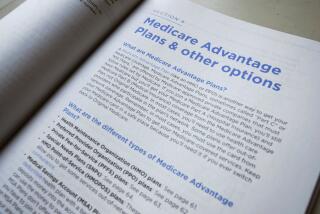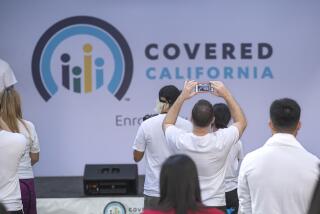What to watch out for during employer health plan open-enrollment period

As October gets underway, so does the health insurance open enrollment period for millions of people who get their benefits on the job.
Debbie Kleinman is one of the nearly 54% of Californians who have work-based health insurance. Each year about this time, she anticipates a notice telling her what’s changing about her policy for the upcoming year and that she has a short window to shop for a new one.
“I do try to look at what they send me and what’s changed,” the marketing research professional from Woodland Hills says.
But Kleinman tends not to rock the boat. She’s had the same plan for years and says she’ll probably stick with it again for 2016. “I’ve always had my PPO,” she says.
There are some changes, however, Kleinman just can’t avoid: rising costs.
“The deductible went up for sure, and the amount that comes out of my paycheck went up too,” she says. “It’s incremental but it goes up every year.”
The cost of premiums for work-based health insurance is expected to rise 4% to 5% in 2016, an increase considered modest, according to industry analyses.
But many California small businesses will see bigger increases in their premiums as they move to fully comply with the federal Affordable Care Act, also known as Obamacare, which they are required to do by 2016.
In addition, the amount that workers pay when they go for healthcare has been rising at a much faster rate than their premiums.
Deductibles — what you pay for care before insurance kicks in — have increased 255% in the last decade, according to the Kaiser Family Foundation’s annual employer health plan survey.
Eight in 10 employees with work-based health insurance today have to shell out more than $1,300 before getting help from insurance to cover medical expenses.
Many employers offer “consumer-directed health plans,” which generally have lower monthly premiums but higher out-of-pocket costs.
The most recent annual health survey by Washington, D.C.-based National Business Group on Health found that 83% of large employers will offer high-deductible plans for 2016, with one-third of companies making these plans the only option available.
Across the board, work-based benefits won’t change dramatically next year, says Brian Marcotte, president and chief executive of the National Business Group on Health.
“I don’t see 2016 as a big change year for employees,” particularly of large firms, he says.
Experts outline what to watch for during this open-enrollment period.
Don’t avoid shopping: According to a recent survey by insurance company Aflac, 90% of employees choose the same benefits every year; more than half admit to spending less than 30 minutes researching their benefit options.
“People are not spending enough time on the decision or understanding their healthcare benefits, which is one of the most important financial decisions they make all year,” says Matthew Owenby, a senior vice president with Aflac.
Pay attention to the co-pays and other out-of-pocket costs you’ll be on the hook for when you go for healthcare. And take a look back at the medical services you’ve used to get a sense of what you’re likely to spend going forward.
“It’s a pretty good indication of how things will go,” Owenby says.
Check your networks: “Make sure the providers in your network are the ones you want to see,” says Matthew Rae, senior policy analyst for the Health Care Marketplace Project with the Kaiser Family Foundation. And check for any changes. “Your provider networks can change year to year,” Rae says.
Prescription drugs: Coverage for prescriptions drugs changes each year too. Confirm that the medications you need are covered, and pay attention to any hoops you’ll need to jump through.
According to the Kaiser Family Foundation survey, about 30% of large employers put controls in place that require you to try a less expensive alternative drug before getting approval for a pricier medication.
About 1 in 4 companies will put tight limits on the amount of medication you can get filled at one time.
“Drug costs are escalating, and when we hear some of the numbers employers have seen, it’s scary,” says Lauren Vela, a senior director with San Francisco-based Pacific Business Group on Health.
Vela says many employees can expect to be required to get prior authorization before prescriptions are approved by insurance, especially for high-priced specialty medications used to treat complex or chronic illnesses.
Get well: More than 8 in 10 large employers have programs to help employees stop smoking, lose weight or make other lifestyle or behavioral changes.
The Kaiser Family Foundation survey finds that more than 3 in 10 include a financial incentive for completing tasks or programs, such as employee health-risk assessments and biometric screenings.
Rewards for participation may include lower insurance premiums and contributions into health savings accounts that can really add up.
In 2016, large employers are offering to deposit an average of $750 per employee into health savings accounts, Marcotte says.
Also, look for new tools available to help you save money and more easily navigate the healthcare system. Nearly 3 in 4 companies surveyed by the National Business Group on Health said they’re adding or expanding offerings to encourage employees to be better healthcare consumers.
Kleinman says even though she combs through her plan’s details during open enrollment, her benefits are still mystifying when it’s time to go for care. “I’m always caught off guard when I get a bill.”
Twitter: @lisazamosky






